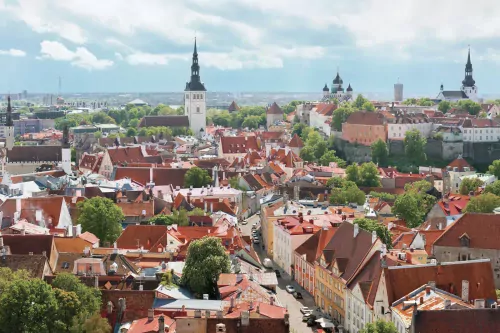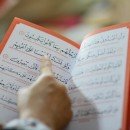Estonian is a unique and fascinating language spoken by around 1.3 million people in Estonia and other parts of the world.



Estonian is a unique and fascinating language spoken by around 1.3 million people in Estonia and other parts of the world. It is the official language of Estonia and belongs to the Finno-Ugric language family, which includes Finnish, Hungarian, and a few other languages spoken mainly in northern Europe.
One of the most notable characteristics of the Estonian language is its complex grammar. Estonian has fourteen cases, which are used to express different grammatical functions such as subject, object, possessive, and locative. This means that the endings of words change depending on their function in the sentence, and it can take some time for non-native speakers to master these grammatical rules.
Another interesting feature of Estonian is that it has three phonemic lengths for vowels and consonants, which means that some sounds are pronounced for longer or shorter periods of time than others. For example, the word "sõna" (meaning "word" in English) has a long "õ" sound, while the word "sona" (meaning "itch" in English) has a short "o" sound. This can also take some practice for non-native speakers to get used to.
Despite its complex grammar and pronunciation, Estonian is known for its simplicity and clarity of expression. It is a phonetic language, which means that words are pronounced as they are spelled, and there are very few irregularities in its grammar. Estonian is also known for its rich vocabulary, which includes many unique words that are not found in other languages.
Estonian has a long and rich history, with the earliest written records dating back to the 13th century. It has been influenced by a variety of languages throughout its history, including German, Swedish, and Russian, but has managed to maintain its unique identity and linguistic features.
Estonian history is long and rich, with evidence of human habitation dating back to the Mesolithic era. The region of present-day Estonia has been inhabited by various tribes throughout history, including the ancient Estonians, the Livonians, and the Germans.
In the early Middle Ages, Estonia was part of the Viking Age trade network and was visited by traders from Scandinavia, the Middle East, and other parts of Europe. The first written records of Estonia date back to the 13th century when the region was conquered by the German Livonian Knights.
During the following centuries, Estonia was ruled by various foreign powers, including the Swedes, the Danes, and the Russians. In the 19th century, the Estonian national awakening began, and Estonian language and culture were revived. Estonians also became increasingly involved in the nationalist movements of other countries in the region, such as Finland and Latvia.
Following World War I, Estonia gained independence from Russia in 1918 and became a republic. However, this independence was short-lived, and in 1940, Estonia was occupied by the Soviet Union. The Soviet occupation lasted until 1991 when Estonia regained its independence as the Soviet Union collapsed.
Since independence, Estonia has become a thriving democracy and one of the most digitally advanced countries in the world. Estonia is also a member of the European Union and NATO and has established close ties with other countries in the Baltic region, such as Finland and Sweden.
Today, Estonia is known for its rich cultural heritage, beautiful landscapes, and thriving technology industry. Estonians continue to celebrate their language and culture, which are an integral part of their national identity.
Estonian is spoken by people all over the world, with significant communities in Finland, Russia, Canada, and the United States. It is also used as a second language in many countries, particularly in northern Europe.
In conclusion, Estonian is a fascinating and unique language with a complex grammar, rich vocabulary, and a long and rich history. Despite its challenges for non-native speakers, it is a beautiful and expressive language that is worth exploring for anyone interested in linguistics and culture.
Recent Posts

Understanding Translation Serv...

Agenzia di Traduzione a Roma: ...

Die Essentielle Rolle von Übe...

Die Essentielle Rolle von Übe...

Die Essentielle Rolle von Übe...

La Traduction Assermentée: Un...
Share it.
© Copyright 2022 LLC
